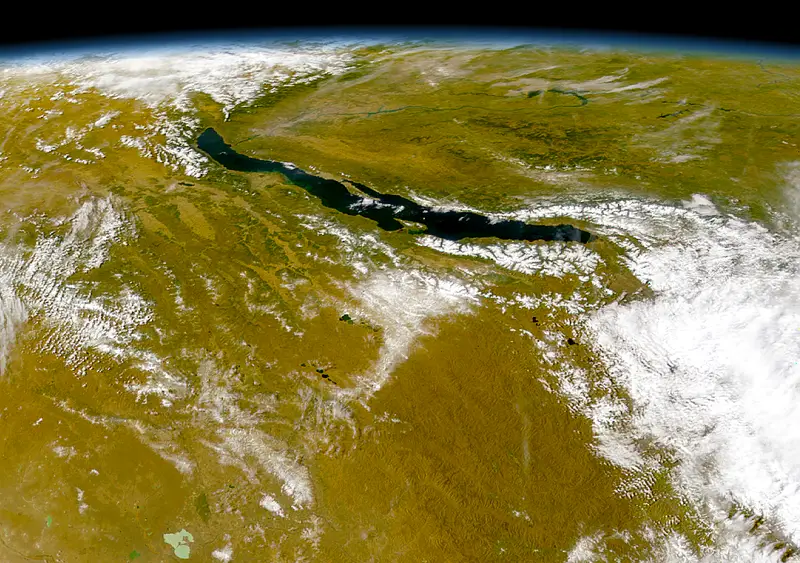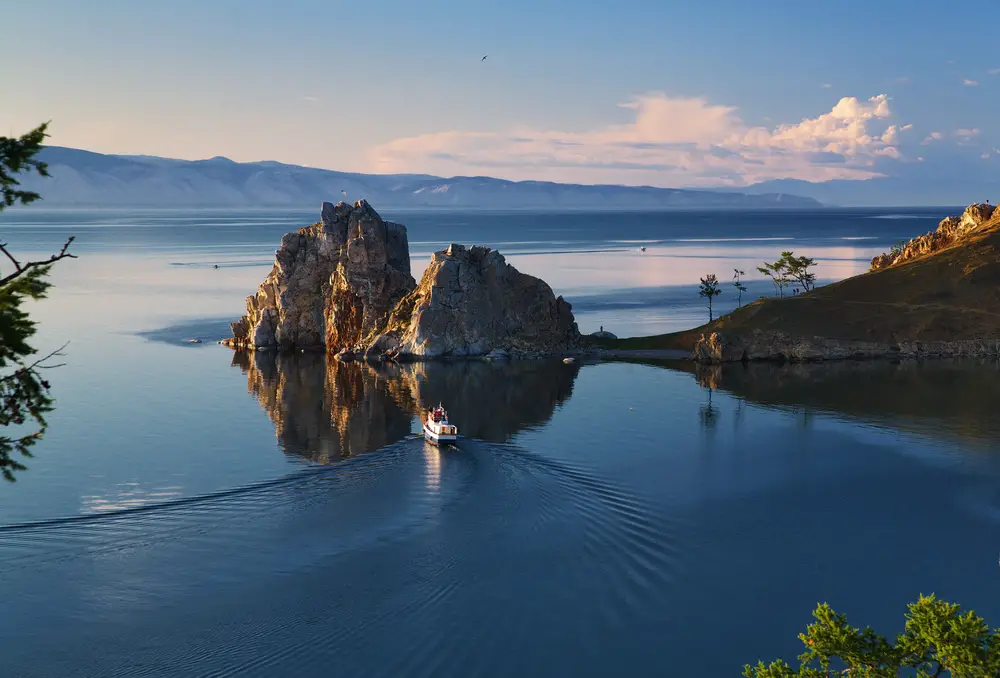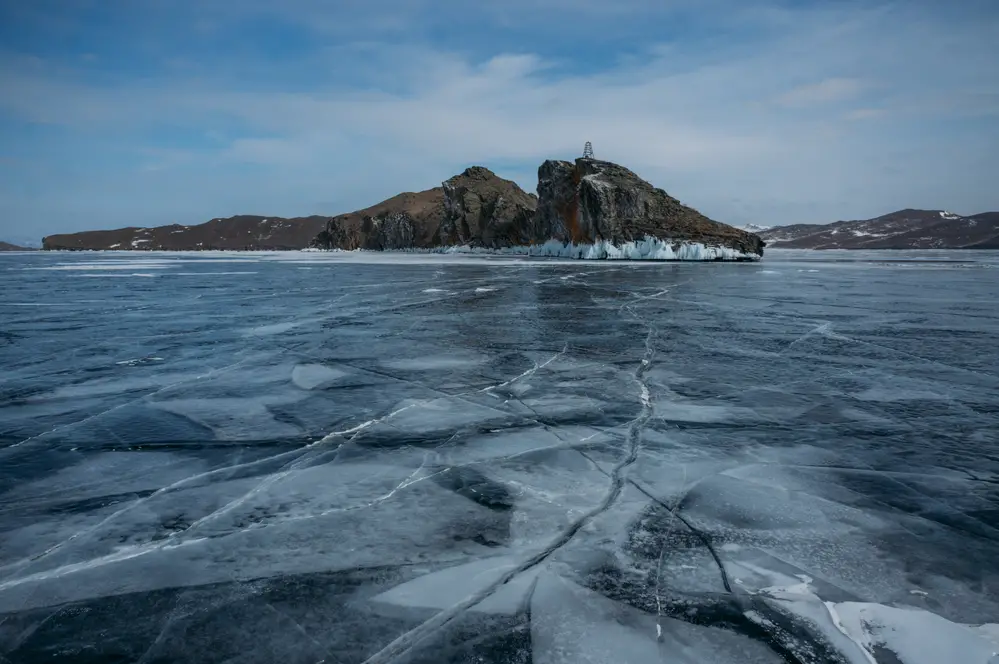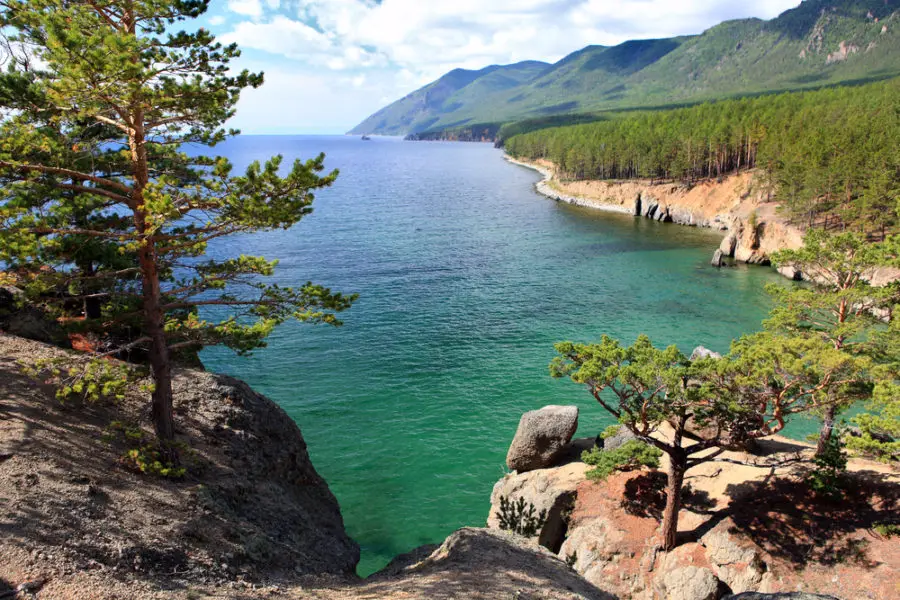Lake Baikal sits in southern Siberia and has the claim to fame of being not only the deepest lake in the world but also being the oldest lake and the lake with the most volume in the world.
The lake is believed to be at least 25 million years old and formed when the Earth’s crust began to split apart as mountains formed around it. By comparison, the Great Lakes were formed from the movement of continental ice sheets only about 20,000 years ago.
What is truly fascinating about Lake Baikal is its depth. It’s estimated to be more than 5,300 feet (1,615 meters) deep and around 4,000 feet (1,419 meters) below sea level at its deepest point. The deepest lake in the United States, Crater Lake in Oregon, is 1,949 feet (594 meters).
But Lake Baikal also takes the title of the freshwater lake with the most volume. With its incredible depth and a surface area of 12,248 square miles, which is larger than the state of Maryland, the lake holds 5,670 cubic miles of freshwater (23,615 cubic kilometers). This means it contains about 20% of the world’s freshwater. This single lake is so large that all of the water of the Great Lakes could fit into it. Its believed that it takes a single drop of water in the lake 330 years to exit the lake once it has entered it. On a side note, over 40% of the freshwater on the planet is contained in Lake Baikal and the Great Lakes.
The coastline of Lake Baikal is also massive. It is 397 miles long (640 km) and 49 miles wide (79.5 km) at its longest and widest point with an average width of 29 miles (47 km). The total distance of its coastline measures about 1,300 miles (2,100 km). That is a little less than the distance from San Diego, California, to Dallas, Texas. More than 300 rivers and streams flow into the lake, but it has only one outlet, the Angara River.
The lake has 27 islands, and one called Olkhon Island is 45 miles in length. Most are uninhabited, though the lake is home to over 1,500 species of animals and over 50 species of fish. Of these animals, 80% are found nowhere else on Earth. One particular animal that is unique only to Lake Baikal is the nerpa, the world’s only freshwater seal.
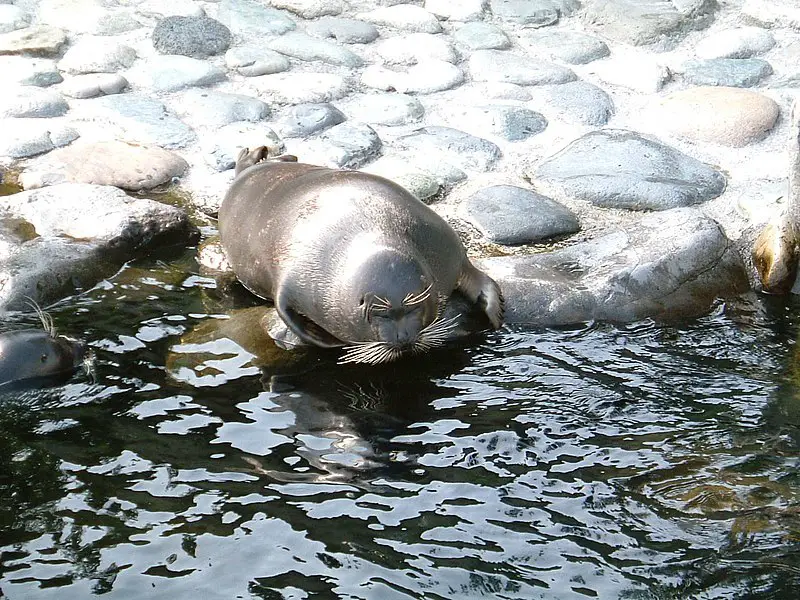
Sources: Live Science, Smithsonian, LakeBaikal.org, NOAA, Geology.com, UNESCO

